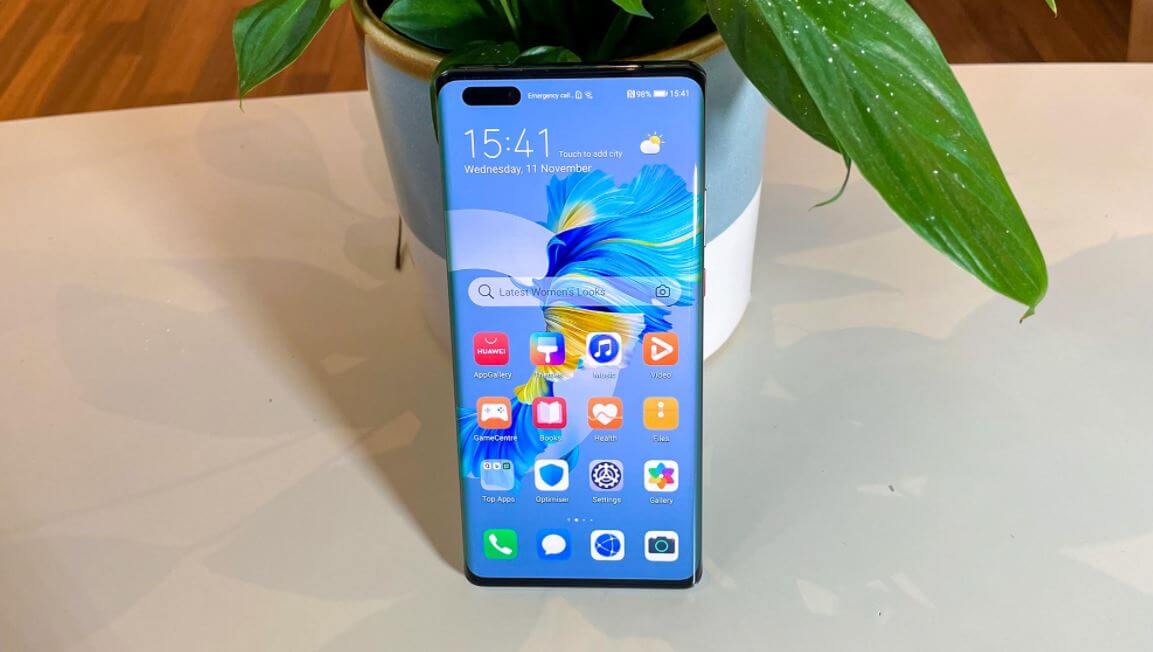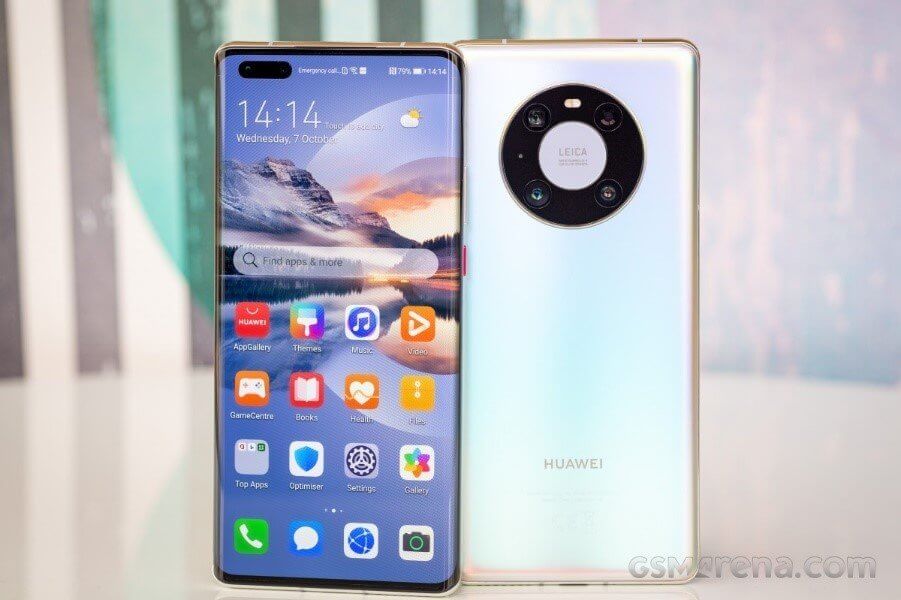Although the phones continue to be among the best you can purchase in terms of design, there are some clear downsides. The most notable difference is that they do not have Google Services. This means no Gmail, YouTube, Google Maps, Play Store, or other programs that many people rely on every day.
Huawei Mobile Services covers the majority of the gap, although it isn’t quite there yet. EMUI 11 (Huawei’s Android flavour) is built on the older Android 10, and the problem isn’t going away anytime soon.
If you don’t want the most up to date software, the Huawei Mate 40 Pro is still an attractive product if you reside outside of the United States. Given the apparent software restrictions, it’s difficult to recommend.
Huawei Mate 40 pro
The Kirin 9000 processor powers the Huawei Mate 40 Pro, which is believed to outperform the Snapdragon 865+ in every performance category. Furthermore, the Chinese include 8 GB of RAM and 256 GB of internal storage, which can be upgraded with a nano memory card. When it comes to connection, no sacrifices can be made. Huawei claims to have the fastest 5G, Wi-Fi 6, Bluetooth 5.2, and USB 3.2. The Mate 40 Pro supports the most recent data transmission technologies, whether with or without a cable. The new Leica triple camera is intended to raise the bar as well.
Why should one use Huawei Mate 40 Pro?
Aside from the unavailability of a 120Hz display (it’s restricted to 90Hz), the phone checked off all the hardware boxes. With the Kirin 9000, it features best-in-class performance, a brilliant camera configuration, long battery life, and fast wired and wireless charging.
Customers appreciated that Huawei deviated from the cookie-cutter designs used by other manufacturers by incorporating a distinctive, rounded camera module. It also sports an intriguing (if rather huge) pill-shaped selfie camera cutout as well as an attractively curved display with low bezels. However, the phone’s curved form makes it slick. The 90 Hz panel is undoubtedly enough, but it would have benefited from an increase to 120 Hz or, at the very least, a greater resolution.

Huawei mate 40 pro Camera
The Mate 40 Pro’s camera is without a doubt one of the greatest on the market. It doesn’t have all the bells and whistles (for that, you’ll have to pay a little more for the China-only Mate 40 Pro Plus), but it’s a wonderful shooter with a lot of versatility.
The 50MP main sensor produces images that are crisp and detailed. They also have a great dynamic range, even if the final image is a little different due to post-processing. The 20MP ultra-wide sensor performs admirably as well, but with notably weaker images than the primary sensor. Not too soft, just softer.
Huawei has been employing periscope zoom technology for a few years now, and the 5x periscope camera on the Mate 40 is no exception.
Battery Life
One of the Mate 40’s most notable features is undoubtedly its camera. The smallest Mate 40 smartphone has a 4,200mAh battery, while the two bigger variants have 4,400mAh batteries as well. You may also enable several power-saving modes in the settings to get a little more juice out of the phone. These let you to disable 5G, the Always On Display, and other functions to save battery life.
The Mate 40 Pro outperforms once again when it comes to charging. It offers 66W SuperCharge wired charging and 50W SuperCharge wireless charging, allowing it to charge the phone from empty to full in under an hour. Reverse wireless charging is also available, albeit it is restricted to 5W.
Speed
It has four Cortex-A77 cores and four Cortex-A55 cores in an octa-core CPU. The graphics are handled by the Mali-G78 GPU, which has a whopping 24 cores.
However, the Cortex-A77 is not the most recent or powerful Arm CPU. The Snapdragon 888 and Exynos 2100 chipsets support the newer and beefier Cortex-A78 and Cortex-X1 processors. Nonetheless, it provides a respectable degree of performance, with Huawei saying that the CPU and GPU are 10% and 52% quicker than the 2020 Snapdragon 865 Plus, respectively.
Telephone service and call quality
The phone app is simple to use and has a clear structure. SIM cards may be controlled and allocated in the SIM card administration section, and capabilities such as WLAN calling and VoLTE can be turned on or off. If you are already able to utilize 5G, make sure to check the settings, since the most recent standard must be activated first. An eSIM can be used instead of the second nano SIM.
As long as the phone is held to the ear, the Huawei Mate 40 Pro’s call quality is superb. The discussion is transmitted extremely naturally, and even background noise is successfully tuned out. In calm areas, speaker mode is also useful, however it occasionally reverberates somewhat.
Conclusion
The Huawei Mate 40 Pro is a well-equipped smartphone in terms of technology. The display isn’t as brilliant as the competition’s current top-of-the-line gadgets, but it also doesn’t have to hide behind it. The Chinese flex their muscles with the SoC in particular, despite the fact that we haven’t been able to complete all of the tests due to the benchmark block on our test device.
The Huawei smartphone also performs well in terms of positioning and call quality. In the test, the triple camera also performed admirably. Although the connectivity modules are cutting-edge, they diminish battery life and rob the Mate 40 Pro of one of its key skills.
Image Courtesy: Supplied
